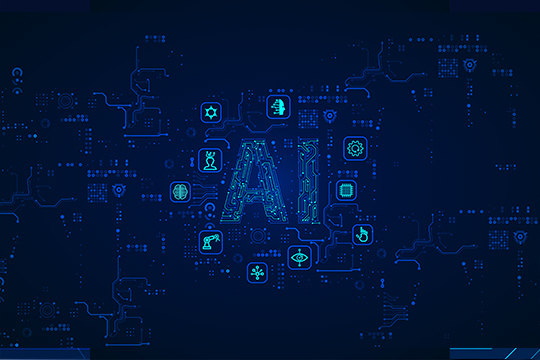Computer and network compliance have transformed significantly over the years as technology has evolved and cybersecurity threats have become more sophisticated. Compliance involves adhering to regulatory requirements, industry standards, and best practices related to the use, management, and protection of digital information.
Compliance In The Beginning
In the early days, there were limited regulations governing security activities and best practices. Most were based on trust and personal relationships.
As businesses grew in size and complexity, governments and organizations started to implement regulations to protect critical aspects within an organization.
With globalization, businesses expanded beyond national borders, leading to the need for international compliance standards. Organizations like the World Trade Organization (WTO) and the International Organization for Standardization (ISO) developed global standards for trade and quality management.
Here’s an overview of how compliance has evolved through the years:
Compliance, The Early Years (1980s – 1990s):
- Trusted Computer System Evaluation Criteria (TCSEC) – “Orange Book” (1983): Developed by the National Computer Security Center (NCSC), TCSEC was one of the earliest standards for evaluating the security of computer systems. It categorized systems based on security levels (D through A) and influenced subsequent security standards.
- National Institute of Standards and Technology (NIST) Guidelines: NIST published various guidelines and standards during this period, including foundational documents like the NIST 800 series, which laid the groundwork for future cybersecurity frameworks.
Transition to the Internet Era (Late 1990s – Early 2000s):
- Federal Information Security Management Act (FISMA) – 2002: FISMA mandated that federal agencies implement information security programs to protect their systems and data. It emphasized risk management and required annual assessments and reporting on security posture.
- ISO/IEC 27001 – Late 1990s: This international standard for information security management systems emerged, offering a framework for organizations to establish, implement, maintain, and continually improve their security posture.
Modern Era and Cyber Threat Evolution (Mid-2000s – Present):
- NIST Cybersecurity Framework (CSF) – 2014: Created in response to Executive Order 13636, the CSF provides a voluntary framework for critical infrastructure organizations to manage and mitigate cybersecurity risks.
- Zero Trust Architecture – Late 2010s to Present: The Zero Trust model gained prominence, emphasizing the need to verify everything accessing the network and continuously authenticate and authorize connections.
- Continuous Monitoring and Risk Management (e.g., NIST RMF, ISACA’s COBIT): The shift towards continuous monitoring and adaptive risk management became prevalent, focusing on real-time threat detection and response.
- Mobile Device Management: The proliferation of mobile devices in the workplace led to the need for Mobile Device Management (MDM) and Bring Your Own Device (BYOD) policies to address security and compliance concerns associated with mobile technology.
- DevSecOps: The integration of security practices into the DevOps (Development and Operations) process, known as DevSecOps, has gained prominence. This approach aims to build security and compliance into the software development lifecycle from the outset.
- Cloud Security Standards (e.g., CIS Benchmarks, AWS Well-Architected Framework): With the widespread adoption of cloud services, specific standards and best practices emerged for securing cloud-based infrastructure.
- AI and Privacy: As artificial intelligence (AI) and machine learning technologies advance, there is a growing focus on ensuring ethical and privacy-compliant use of AI algorithms, especially in industries like healthcare and finance.
These compliance frameworks and standards continue to evolve as technologies like AI, IoT, and edge computing become more prevalent, and cybersecurity threats become increasingly sophisticated. The aim is to adapt to the changing threat landscape, technological advancements, and the increasing resilience of interconnected systems.
The advent of the internet and digital technology introduced new challenges and opportunities for compliance. Some of the most expensive and widespread compliance breaches have reached millions of affected users, costing big dollars. The exact dollar amount for each breach can be challenging because of various factors. Some of the factors include the scope of the breach, financial losses, regulatory fines, legal settlements, and the overall impact on the affected organizations.
Colossal compliance breaches :
Heartland Payment Systems (2008)
This breach cost approximately $140 million once settlement costs, fines, legal fees and security enhancements were all tallied. As Forbes reports, “Heartland Payment systems had the unfortunate title of falling victim to one of the largest data breaches in recent history.”
Epsilon (2011)
The cost was not publicly disclosed and while email addresses may not seem like sensitive information, it raises the concern about targeted phishing attacks and data security. As reported by abc NEWS, Graham Cluley, a senior technology consultant with the security firm Sophos, said that although the Epsilon breach appears to have hit many well-known companies and their millions of customers, at least the hackers didn’t run away with credit card information or home addresses, which could be used to commit identity theft or make unauthorized purchases
Yahoo (2013-2014)
The exact dollar amount remains unclear but the breach resulted in a $350 million acquisition discount to Verizon. The New York Times reported the massive scale of those affected in not one, but two separate attacks.
Office of Personnel Management (OPM) (2015)
This was considered one of the most significant compliance breaches of U.S. government data in terms of safeguarding sensitive government data and adhering to cybersecurity standards. OPM reports that roughly 21.5 million current and former employees were affected in two separate incidents.
Equifax (2017)
This being considered the most expensive compliance breach in history. Between financial impact, regulatory fees and legal settlements has estimated the cost over $700 million. As the FBI announced charges against four Chinese military-backed hackers in connection with this intrusion which led to the largest known theft of personally identifiable information ever carried out by state-sponsored actors.
Marriott (2018)
This compliance breach resulted in a $100 million price tag from remediation and legal costs and additional costs for regulatory fines. In a statement from Marriot from November 2018, that for approximately 327 million guests, the information identified includes some combination of names, mailing addresses, phone numbers, email addresses, and passport numbers. That’s not all, it also included Starwood account information, date of birth, gender, arrival and departure times, payment card numbers and expiration dates.
Compliance Breaches during COVID and Beyond:
COVID-19 Data Breach
Several instances occurred where sensitive health data was exposed due to vulnerabilities or misconfigurations. The National Institute of Health gives a very detailed analysis of the impact during the pandemic.
T-Mobile (2012, 2015)
The breaches cost the company 2.5 million for customers affected. Then in 2021, the data leak cost the carrier $500 million; $350 million in payouts, and another $150 million pledged to upgrade security through 2023.
Review the 2023 Verizon Investigations Report here.
Oteemo Can Help
Compliance is not a one-time achievement but an ongoing process. It fosters a culture of continual improvement, where organizations regularly assess, update, and enhance their security measures to adapt to evolving cyber threats.
Compliance serves as a roadmap for organizations to establish robust security practices, manage risks effectively, protect sensitive data, and align with legal and regulatory requirements, all contributing to a secure and resilient environment. “Oteemo offers a variety of catered services designed to solve several common cybersecurity gaps. Our team has extensive experience assessing and designing tailored solutions for organizations of all sizes. Simply put – if you need it secure, we can help”!
FAQs History of Compliance
What is the significance of the Trusted Computer System Evaluation Criteria (TCSEC) in the history of compliance?
The TCSEC, commonly known as the “Orange Book,” was one of the earliest standards for evaluating computer system security. Developed in 1983 by the National Computer Security Center, it categorized systems based on security levels (D through A) and significantly influenced subsequent security standards.
How did the Federal Information Security Management Act (FISMA) of 2002 impact compliance?
FISMA mandated federal agencies to implement comprehensive information security programs. It emphasized risk management, requiring annual assessments and reporting on security posture, marking a significant shift in the approach towards federal data protection and compliance.
What role does the NIST Cybersecurity Framework (CSF) play in modern cybersecurity compliance?
Introduced in 2014, the NIST Cybersecurity Framework provides a voluntary but comprehensive framework for critical infrastructure organizations to manage and mitigate cybersecurity risks. It’s a pivotal tool for organizations to adapt to evolving cyber threats and ensure resilient cybersecurity practices.
How have developments like Zero Trust Architecture and DevSecOps influenced compliance practices?
Zero Trust Architecture, emphasizing network access verification and continuous authorization, along with DevSecOps, integrating security into the development and operations process, represent modern approaches in compliance. These models stress the importance of continuous monitoring and integrating security at every stage, aligning with contemporary cybersecurity challenges.
What has been the impact of major compliance breaches like the Equifax and Marriott incidents?
Major breaches like Equifax and Marriott, with costs running into hundreds of millions of dollars, underscore the critical importance of robust compliance measures. These incidents highlight the financial, legal, and reputational risks associated with non-compliance and the necessity for continuous improvement in cybersecurity standards to protect sensitive data.









0 Comments